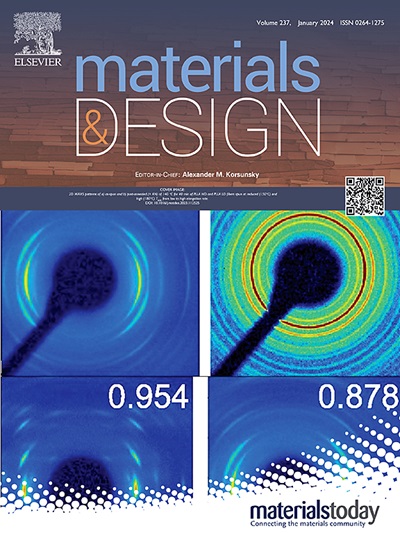High efficient near-infrared sintering for electrohydrodynamic printed frequency selective surface
IF 7.6
2区 材料科学
Q1 MATERIALS SCIENCE, MULTIDISCIPLINARY
引用次数: 0
Abstract
The efficient and compatible nano-silver paste sintering technology is significant for printed electronics. However, the current sintering technology still has limitations in terms of sintering time, post-sintering resistivity, and applicable types of substrates. Here we propose a highly efficient near-infrared sintering method for electrohydrodynamic (EHD) printed nano-silver paste. This method is suitable for sintering of nano-silver ink for large curved circuits manufacturing, achieving excellent film conductivity along with enhancing its interfacial strength. This article focuses on exploring the effects of process parameters such as near-infrared sintering power, time and lap-substrate distance on efficiency and resistivity, and ultimately achieving a rapid sintering of nano-silver paste with a resistivity of . This method adopted near-infrared sintering to sinter nano-silver ink circuits created by EHD printing, followed by plasma treatment to enhance the interfacial strength up to 5B level. Finally, we have successfully fabricated both planar and curved frequency selective surface (FSS) by the above-mentioned methods. The planar FSS sample presented a shielding capability of 2̃5 dB at resonant frequencies of 6 GHz and 10 GHz, which is quite accordance to the simulation results. This method shows great potential for application in large-scale, high-efficiency printed electronics fabrication.

求助全文
约1分钟内获得全文
求助全文
来源期刊

Materials & Design
Engineering-Mechanical Engineering
CiteScore
14.30
自引率
7.10%
发文量
1028
审稿时长
85 days
期刊介绍:
Materials and Design is a multi-disciplinary journal that publishes original research reports, review articles, and express communications. The journal focuses on studying the structure and properties of inorganic and organic materials, advancements in synthesis, processing, characterization, and testing, the design of materials and engineering systems, and their applications in technology. It aims to bring together various aspects of materials science, engineering, physics, and chemistry.
The journal explores themes ranging from materials to design and aims to reveal the connections between natural and artificial materials, as well as experiment and modeling. Manuscripts submitted to Materials and Design should contain elements of discovery and surprise, as they often contribute new insights into the architecture and function of matter.
 求助内容:
求助内容: 应助结果提醒方式:
应助结果提醒方式:


